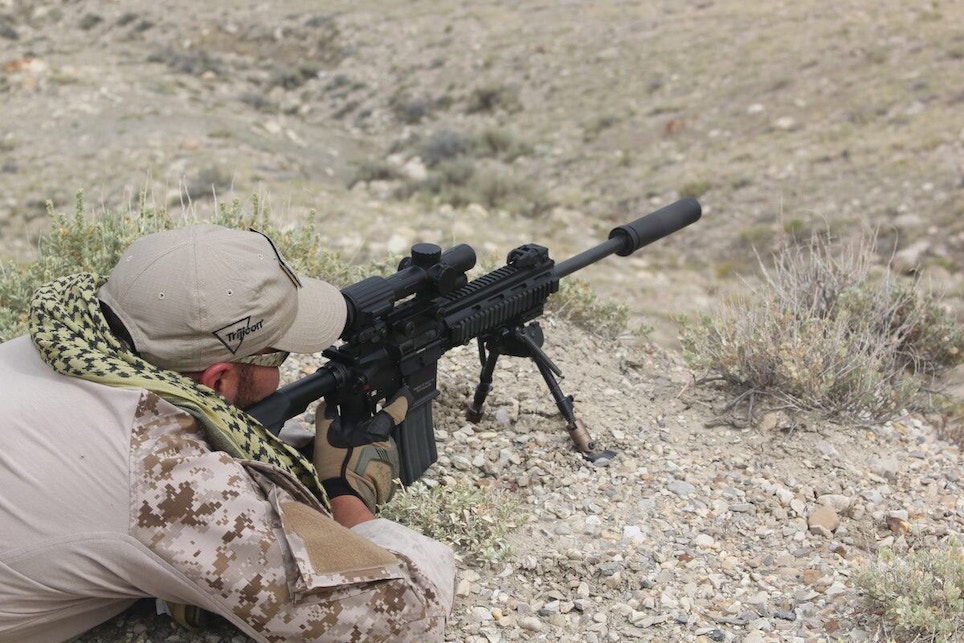Precision shooting products offer a growth area for most shooting sports retailers.
Right from the get-go, it’s important to define terms because precision shooting encompasses a whole lot more than many folks might imagine. It is easy to envision that precision shooting and long-range shooting are the same thing and that’s all there is to it.
Yes, successful long-range shooting assumes precision. But precision shooting can involve distances as short as a few yards and applies all the way to the farthest shot imaginable.
Precision shooting is the realization of the inherent extreme accuracy of a truly credible firearm. This is not achieved easily or by accident. And it takes a seemingly endless amount of very specialized equipment in the process.
For the shooter, it takes a lot of practice. It takes precise equipment, which includes everything from the firearm itself to its sighting systems to the ammunition — if any single element is lacking, precision bullet placement doesn’t result.
And when it comes to long-range precision shooting, there are other factors like trajectory and wind that are at play with every shot. This means that there also are sales opportunities for things like wind meters and optics with rangefinding and ballistics capabilities.
Literally, at every turn in the precision shooting arena, there are potential sales opportunities. And this kind of shooting is one of the fastest growing segments of the shooting sports these days. In other words, the stars are aligned in a way that makes it easier to capture extended sales than it would have been at any point in the past.
Certainly, benchrest shooting is synonymous with precision shooting because the object of the game in benchrest is to put multiple bullets literally through the same hole at distance. These shooters routinely achieve groups that measure less than a quarter inch. They prefer groups in the tenth-of-an-inch range.
Next come the serious long-range shooters who figure that accuracy begins at a half minute of angle and tightens from there. And remember that we are not talking about mere inherent accuracy but delivered accuracy with on-target performance.
Yet precision shooting can also involve something as removed as competitive air rifles where small bullseye targets are shot from the standing offhand position at 10 meters with aperture sights.
The 10 “ring” on these targets isn’t a ring at all. Rather, it is a mere dot. To be competitive, shooters must obliterate the dot on most, if not all, targets. To achieve this, the air rifles they use are the epitome of precision.
With all of this in mind, it’s easy to see that this is an equipment-intensive environment. When it comes to precision shooting, it’s impossible for any of the equipment to be too good, and with the pace of innovation, today’s best today could be mediocre in the near future. Hence, precision shooters constantly want to be on the cutting edge of high-performance, precision gear. This opens the door for upselling and repeated sales as the customers evolve on their precision shooting journey.
All of this makes sense for shops that have in-house expertise or a customer base with a high level of expertise. But shops that have neither aren’t out of the game. Even average or occasional shooters can benefit from precision equipment. Certainly, precision equipment is not going to degrade their performance and enjoyment of the shooting sports.
Then there are the latent precision shooters in the customer base who don’t even know that they are, deep down inside, precision shooting fanatics. For them, the equivalent of just a little nudge at the counter can easily open up a whole new world and an ongoing relationship with the shop.
This is still another example of the truism that shooting sports retailers are in the dream business. They help their customers realize their dreams. Hence, it is not a big stretch to consider stocking at least a few precision items in some of the logical lines and track the sales performance of them. It shouldn’t take long to figure out what works locally and what doesn’t. And this can be done without much up-front investment.
Here is where understanding the local customer base really comes into play. Even a little bit of understanding can hedge the bets when it comes to decisions about stocking precision shooting items.
For shops that handle reloading equipment, this can mean having a set of precision dies for one of the currently hot cartridges like the 6.5 Creedmoor or any of the Precision Rifle cartridges. Or it could be a simple as stocking some of the loaded ammo for these kinds of cartridges. The point is that it is hard, if not next to impossible, to sell what isn’t there.
Certainly, special ordering items for customers can and should be an integral part of the sales philosophy. But remember that people are tactile individuals, which means that even when the eye sees and the brain understands, actually touching something has an added meaning that can close sales. It’s also easier for a customer to walk away from a purchase of something that needs to be ordered than for something that is right there, in hand.
Precision shooting is one of those areas that provides growth potential regardless of a store’s current sales level. If it hasn’t been a focus in the past, there is no time like the present to move into the market. If your store has dabbled in it, then maybe it’s time to up the game and expand offerings.
In the end, precision shooting offers added sales opportunities for most shooting sports retailers. Something to think about.






